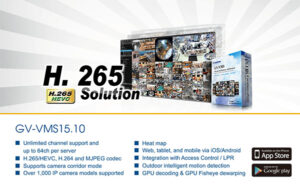
Manufacturers, at a very broad level, can be categorized as providing solutions that are restricted to their own products and those providing open architecture, allowing the flexibility to integrate third-party applications.
One of the key attractions of open architecture is the flexibility that it offers. Open solutions provide more opportunities to expand the solutions. The freedom to decide on what IP camera to use depending on the requirements of any given location and the multiple features to integrate with ever-changing devices are all seen as advantages.
Open architecture solutions allow us more flexibility and provides more growth options for customers. By using open architecture recording systems, you can specify any brand of IP camera. In some cases, you may use different IP cameras depending on the requirement of a specific location. Also some open recording systems have much more features and functions and provide integration with other security systems such as door access control and intercoms.
Although closed protocol (end-to-end) systems have their place in security and surveillance, the future of security will be about running everything from one network – surveillance, access control, buildings, intruder detection, smart automation, corporate network traffic and more. At some point the security industry has to go the same way as IT, with the capability to integrate different security and operational systems onto a single network and, provide the connectivity to optimize all operations run smoothly in an efficient, coherent way that eliminates the past problems and complexity of disparate systems.
Critical infrastructure, education, and a wide range of global corporate enterprises often require solutions that are well-tailored to their unique requirements, and for this, an open architecture would be inevitable choice.
Open architecture technologies offer the flexibility to mix and match best-of-breed components to optimize overall performance. An open architecture approach also offers greater scope to scale and futureproof a video surveillance system, making it easy for customers to expand and upgrade provision as their commercial requirements evolve. Open architecture also offers a far greater choice of equipment so that we can be confident of delivering the highest specification for every aspect of an installation. Furthermore, open architecture makes it easier for a customer to re-use elements of their existing security network investment without the need to rip and replace it all.

As systems become increasingly IP-based, it would seem inevitable that the security industry takes the route of the IT industry. Open architecture is the present and future of video surveillance systems.
In fact, with the advent of the IP technology and with the increase of performance, more and more security professionals become aware of the potential of video surveillance and, consequently, they demand more from their systems (higher resolution, challenging lighting conditions, video analytics, etc.). However, every VSS manufacturer has different strengths and weaknesses and alone they would not be able to fit all applications. The weaknesses, though, can be easily compensated by combining different brands and technologies and integrate different functionalities under the same platform.
Furthermore, in the recent years efforts have been going on to standardize the video surveillance market. These have not been successful given the speed of technological developments in the segment and the wide variety of products available any standardized protocols will only allow integration to very limited functionalities.
This is why developers and manufacturers must continue to focus to provide open integration to several third party products.
Source: a&s Magazine



































































